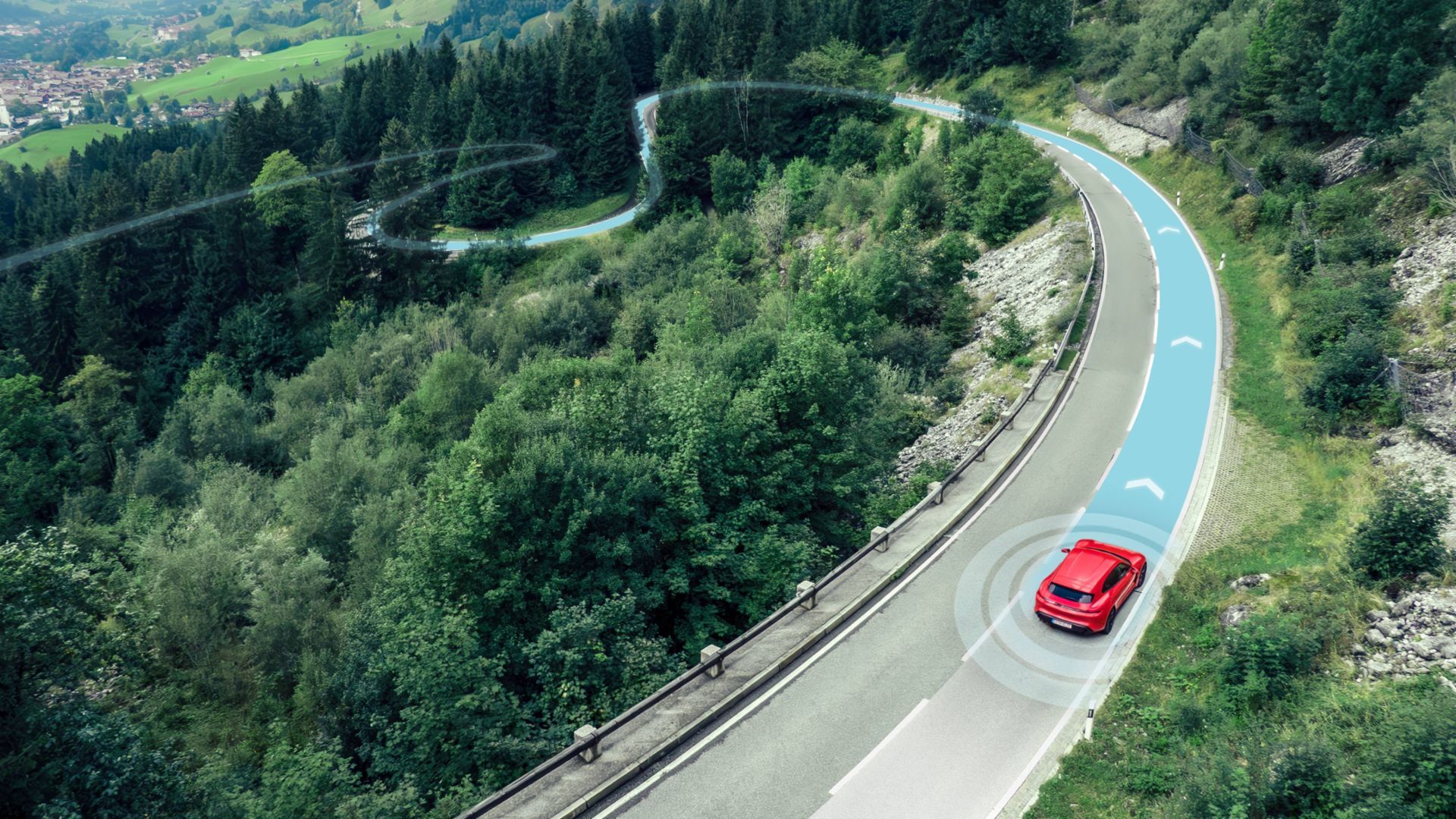Virtual Worlds: For Real – Precise Track Modeling for Customers
Before the new Porsche Cayenne was presented in April last year, the prototype had already driven four million test kilometers. However, these were only the trips on real roads and off-road terrain—not including the virtual test drives in simulation. Nowadays, more than 1,000 kilometers are driven on the computer for every real-life test kilometer. Engineers create a digital twin of the vehicle and then test it through virtual drives in a simulated environment on synthetic or hybrid test benches (SiL, HiL, ViL), primarily in situations that rarely occur in real life or are too dangerous to test in real conditions. How does the cruise control react, for example, when there’s a wild boar waiting at the end of a curve?
For the validation of driver assistance systems and highly automated driving functions, it becomes indispensable to test such "corner cases" in countless variants and different levels of criticality. This makes another resource increasingly important: virtual roads and environments.
The Role of Virtual Roads
Tille Karoline Rupp, Senior Manager Simulation at Porsche Engineering, emphasizes the necessity of a route model—a digital twin of the road and environment. Previously, such scenes or track models were generated manually, but with the demand rising for billions of test kilometers towards autonomous cars, a high degree of automation is crucial. Porsche Engineering has developed its own end-to-end tool chain to generate virtual test tracks from various raw data with minimal manual intervention.
One source for scene generation is high-resolution maps from suppliers or real test drives conducted by Porsche Engineering with its JUPITER test vehicles. Public map services like Google Maps aren't suitable for this task, as the required precision down to the millimeter level is necessary for lane and road width as well as three-dimensional cross-slopes.
Building the Track Model
The track model construction begins with deriving a logical model of the road from map data, described using mathematical functions and stored as an Asam OpenDRIVE® file. This is followed by creating a three-dimensional model of the road—a visual representation that can interact with sensor models. Engineers can modify this virtual test track, adding elements like slip roads or infinite circuits, and can model real roads, such as the A8 freeway from Stuttgart to Munich.
To optimize camera-based functions, the virtual track model is enhanced with a virtual environment using 3D graphics software like Houdini, allowing the creation of realistic-looking trees and buildings. Despite the detailed modeling, it’s essential to balance between enough details for reliable validation and avoiding excessive computing power demand. Irrelevant or distant objects are removed or simplified to ensure smooth simulation.
Automated Tool Chain and Quality Assurance
Efficiency in track modeling demands high automation. Porsche Engineering’s international team has developed an end-to-end tool chain that automates all steps from logical road descriptions to the final 3D model. Quality assurance involves verifying the data for drivability, importability, and compliance with standards using tools like the quality checker from Cariad.
Together with Cariad and Asam, Porsche Engineering is working on improving standards and their interchangeability through initiatives like the Asam Quality Checker project. This collaboration aims to develop a review framework for better quality and interoperability of simulation tools.
Future Enhancements with AI and Weather Variants
Advancing towards highly automated driving requires even more extensive and detailed virtual test tracks. Future developments include introducing weather variants, like winter scenarios with snow piles affecting lane markings. Additionally, artificial intelligence will play a significant role in further enhancing detail by analyzing satellite images and extracting elements like traffic signs from video recordings, thus accelerating route model adaptation for different regions.
Conclusion
The precision and innovation in virtual track modeling are crucial for the future of autonomous driving and advanced driver assistance systems. These developments are setting new benchmarks in the automotive industry, paving the way for safer and more reliable vehicles. For more insights on the latest in automotive technology and to explore a wide range of used cars in Dubai, visit Auto Trader UAE. Here, you’ll find comprehensive listings and detailed information to help you make informed decisions about your next car purchase.

